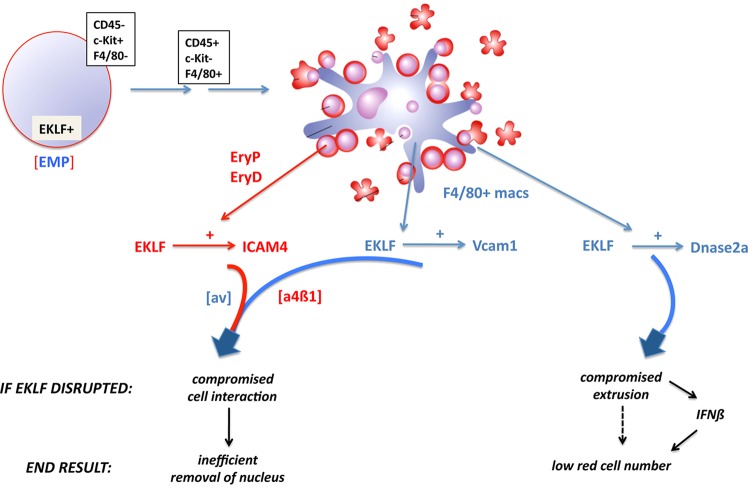Fig. 8.
Model of the role of EKLF in erythroblastic island genetic regulation and integrity. Components (cells and genes) are color-coded: red for erythroid, blue for macrophage. EKLF is expressed in the CD45-/Kit+/F4/80− erythroid-myeloid progenitor (EMP) within the E8.5 yolk sac. This cell sequentially progresses through CD45+/Kit-/F4/80− and CD45+/Kit-/F4/80+ stages (Bertrand et al., 2005; Kierdorf et al., 2013), eventually generating the erythroid and macrophage cells of the erythroblastic island, probably in a clonal manner. EKLF controls expression of cell surface ICAM4 in the erythroid cell (which interacts with macrophage αv integrin), and of cell surface VCAM1 (which interacts with erythroid α4β1 integrin) and nuclear DNASE2A in the macrophage cell. EKLF ablation directly and indirectly leads to compromised cell interactions, ineffective nuclear extrusion, and IFNβ induction, resulting in low red cell numbers that retain their nuclei.

